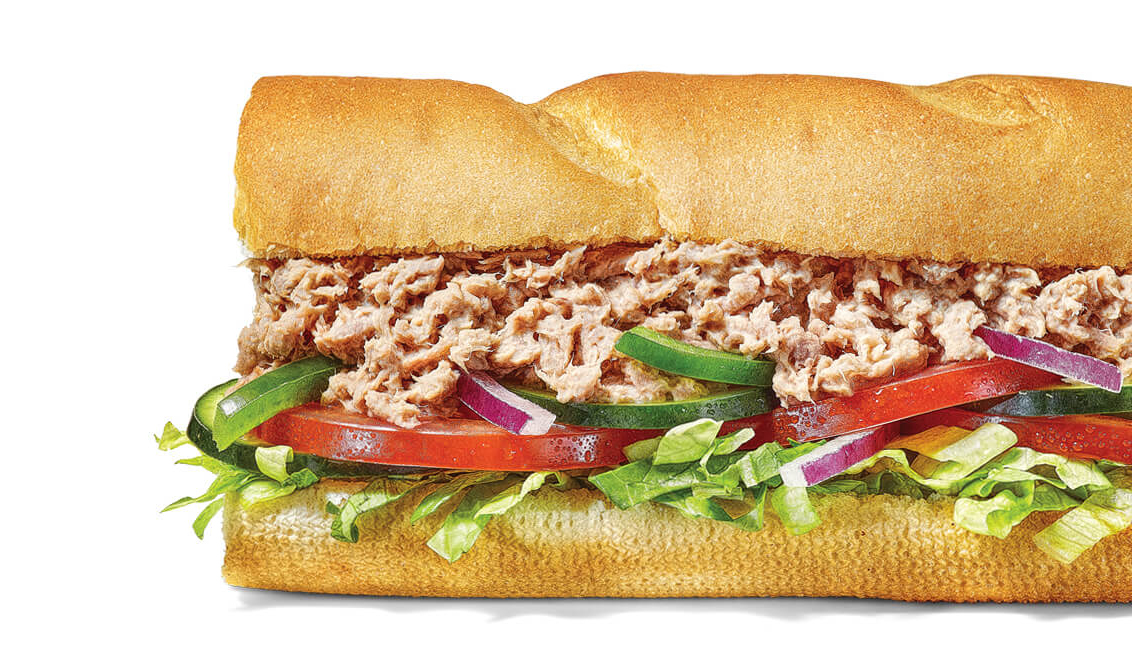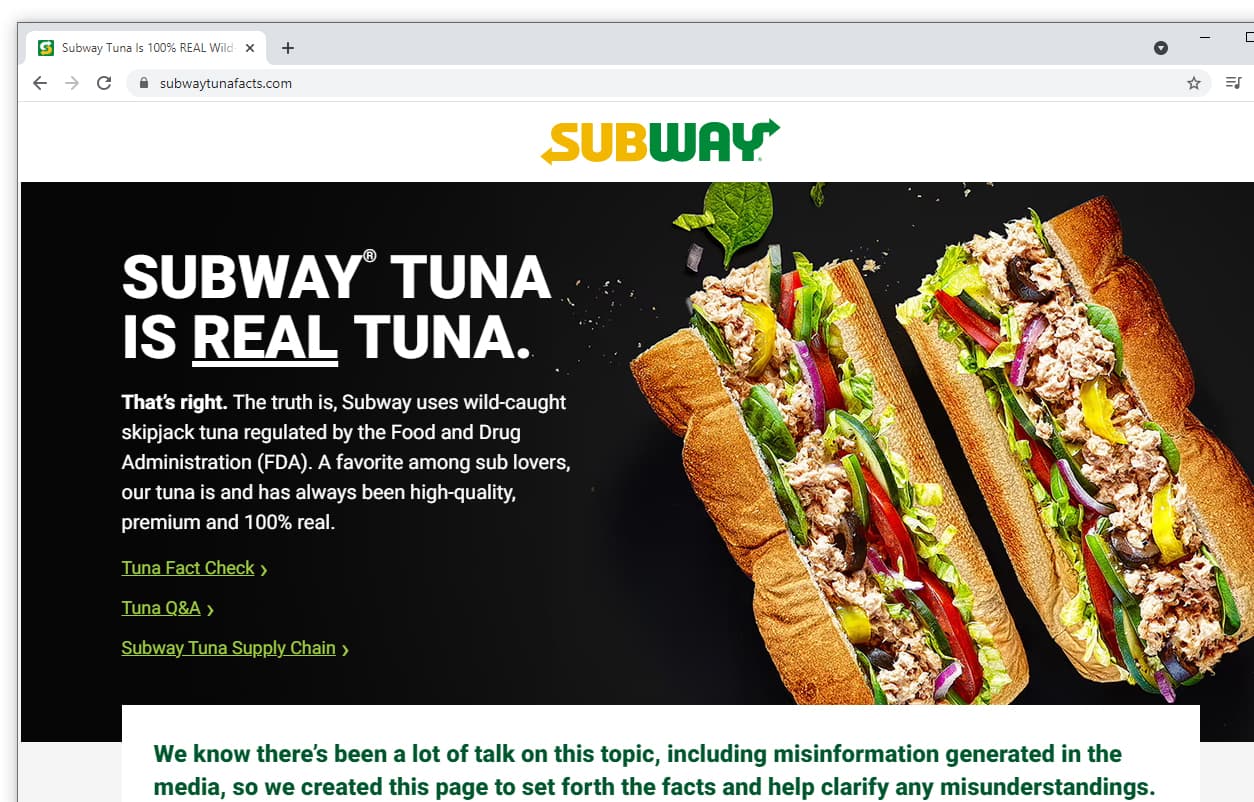Subway is an American fast food restaurant franchise, famous for its submarine sandwiches, salads and beverages.
Founded by Fred DeLuca and financed by Peter Buck in 1965, it was originally called the Pete's Super Submarines, when it first opened in Bridgeport, Connecticut. The restaurant was renamed Subway about two years later, and a franchise operation began in 1974 with a second restaurant in Wallingford, Connecticut.
After having a global presence with its franchise, Subway has met criticisms about its ingredients.
And this includes the ingredients in its tuna sandwich.
A lawsuit was filed against the company alleging that the ingredient Subway has in its tuna was a mixture of "various concoctions that do not constitute tuna, yet have been blended together by defendants to imitate the appearance of tuna".

"Our restaurants receive pure tuna, mix it with mayonnaise and serve on a freshly made sandwich to our guests," said Subway's senior director for global food safety and quality. "Yes, we confirmed that tuna was definitely in all three samples we received".
The class-action lawsuit against America’s largest sandwich chain has raised questions about America’s most popular canned fish.
As competitors and celebrities started to amplify the news, and as it gets the public's attention, many started to wonder whether Subway is really selling tunas?
Canned tuna is high in protein, and low in fat.
And it was in the 1900s that tuna sandwich became prominent and popular. This happened because people realized that canned fish could allow them to create a quick and cheap, but also a tasty meal that involved no cooking. By the 1950s, tuna surpassed salmon in popularity, and during the 1980s, an estimated 85% of Americans had canned tuna in their pantries despite growing concerns about high levels of mercury in the fish.
Fast forward, canned tunas have become one of the most popular shelf-stable food.
Subway has nearly 40,000 locations worldwide, about half of them in the U.S.. And its tuna sandwich is one of its best-selling.
If the lawsuit and the public perception aren't already bad, an independent test from The New York Times that sent Subway's tuna to a lab for independent testing, found that there is "no amplifiable tuna DNA was present in the sample."
The article then said that "we cannot identify the species."
Seafood fraud is one of the most notorious types of food fraud in the world.
And with people questioning its tunas, before things go further south, the company created a dedicated website to defend its food.
Called the SubwayTunaFacts.com, Subway proclaims that "Subway tuna is real tuna."
"That's right. The truth is, Subway uses wild-caught skipjack tuna regulated by the Food and Drug Administration (FDA). A favorite among sub lovers, our tuna is and has always been high-quality, premium and 100 percent real."
Visitors can see a "Tuna Fact Check" that counters the New York Times article.
"What actually happened is that the New York Times commissioned a test that couldn't detect tuna DNA in their sample," Subway wrote.
"If the test had confirmed the existence of a protein other than tuna, questions could have been raised. However, their 'non-detect' conclusion really just means that the test was inadequate in determining what the protein was. In other words, it was a problem with the test, not the tuna."
Subway also makes itself more transparent, with FAQs and giving out data about its tuna supply chain, naming Jana Brands and Rema Food Group as its importers, to also explain that the suppliers "are only allowed to accept whole frozen fish, which comes with a statement from each fishing boat captain affirming the species, catch method, traceability information, and more."

With the website and its own campaign going, Subway also noted that the plaintiffs in the lawsuit have backed off the claim somewhat.
"Even the plaintiffs have softened their original claims. In a new filing from June, their complaints centered not on whether Subway's tuna was tuna at all, but whether it was '100% sustainably caught skipjack and yellowfin tuna,'" the statement read.
In addition to that, the company also took issue with the idea of DNA testing.
"DNA testing is simply not a reliable way to identify denatured proteins, like Subway's tuna, which was cooked before it was tested," the statement said.
This isn't the first time Subway stumbles in a controversy.
Previously, a food blogger and activist managed to gather more than 50,000 signatures in a petition, and forced Subway to change the ingredient used in its bread.
That time, Subway was forced to remove azodicarbonamide as one of its bread's ingredient. This ingredient is known as a bread conditioner, which whitens the dough, and allows the sandwich to bake more quickly.
Another time was when Subway was forced to use meat produced using a routine of antibiotics, to meat produced without it.